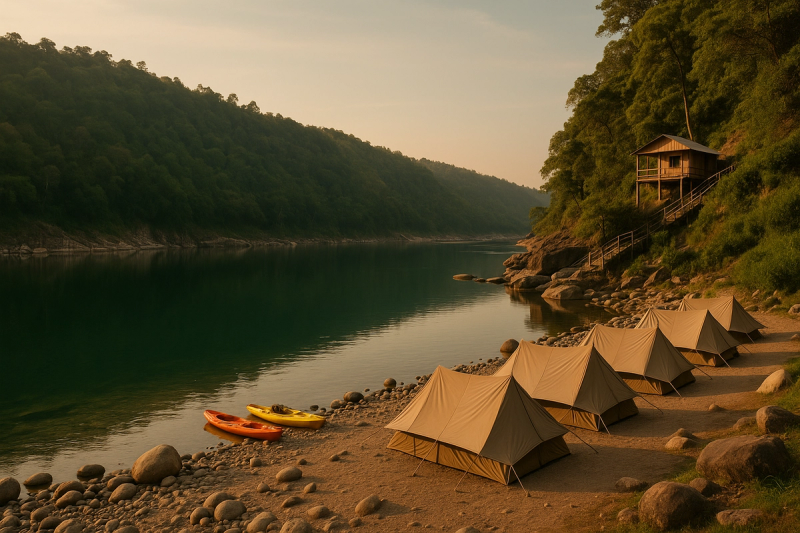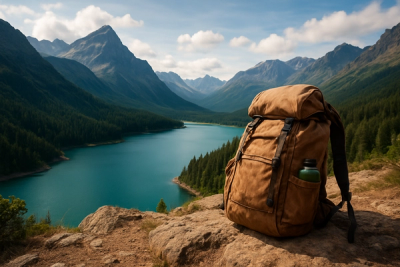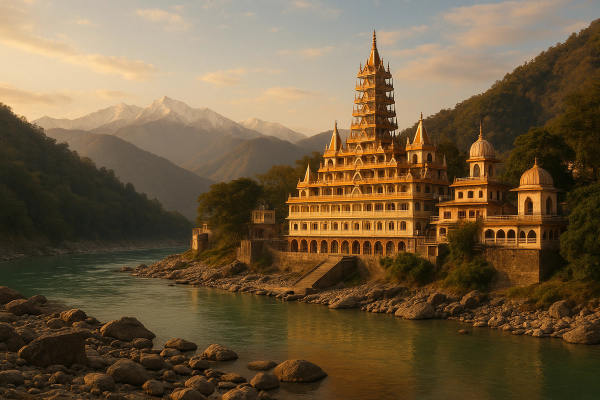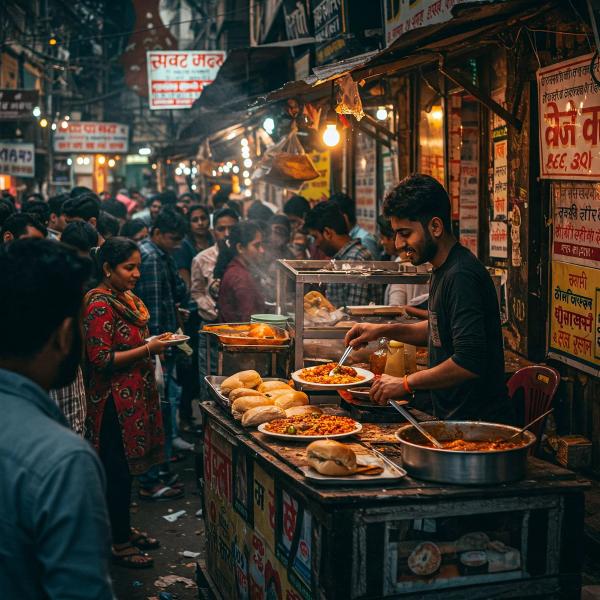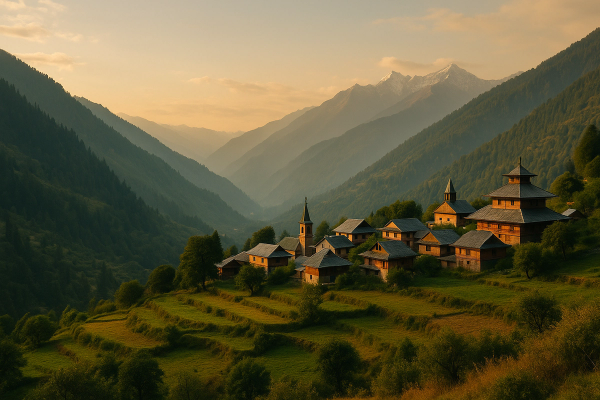Shnongpdeng, the Dawki Alternative: River Camping, Kayaking & Cliff Jumps (real talk, full guide) #
If you’ve been eyeing Dawki for those crystal-clear river photos, quick tip from desi travelers: slide a little upstream to Shnongpdeng. Same Umngot river, less chaos, more chill. It’s one of those places that, you know, looks unreal on Instagram but actually feels better in person because there’s breeze on your face and smoke from someone’s bonfire drifting over the water and people laughing in Khasi and Pnar all around. I’m writing this the way we talk on family WhatsApp—no fancy brochure gyan—just the stuff you actually need, plus a bit of the feels that make the place stick in your head. I’ve been speaking to local boatmen, camp owners, BSF folks at the check post, and a few slightly-crazy friends who jumped off rocks here last winter. So ya, it’s first-hand-ish, ground-up, and not tourist-board polished.¶
Where exactly is Shnongpdeng and why it’s better than Dawki (most days) #
Shnongpdeng is a small village on the banks of the Umngot in West Jaintia Hills, Meghalaya—about 7 to 8 km upstream from Dawki town and the India–Bangladesh border. Dawki itself gets day-trip crowds from Shillong, especially post–11 am. Shnongpdeng’s vibe is calmer early morning and late evening. Same water clarity—seriously like glass on a good winter morning—but you can spread out on the riverbanks, pitch tents, straight-up hop into a kayak, or just lie on those sun-warmed boulders. Is it secret? No. Not any more. Weekends can be busy. But compared to Dawki bazaar-side boat rides with everyone shouting “move a little left bhai,” this feels like you’ve stepped two beats away from the noise. Also, the suspension bridge here gives a mad view at sunrise, and when mist lifts you can see people boating and the riverbed stones like you’re looking through air.¶
River camping in Shnongpdeng: not glamping, not roughing it either #
Don’t picture Swiss tents with fairy lights and five-course dinners. But also don’t picture jungle survival. River camping here is simple, pretty clean, and honestly the most fun if your group comes for the river and not for room service. You get a tent or a basic bamboo hut, firm mattress, blanket, usually a pillow, and a designated spot for bonfire. Toilets have improved a lot in the last couple seasons—western seats, water buckets, sometimes running water, and yes, it’s shared. Electricity is generator-backed in many camps; charging points exist but don’t expect ten sockets per tent. Nights? Quiet except the water shushing over the stones and sometimes a guitar from the next camp strumming ‘old Hindi classics’ kind of playlist. Cash works. UPI works at most places now. Locals running the camps are chill and helpful. They’ll warn you if the water level rises (it can, after late-evening rain upstream) and are very strict about life jackets if you’re anywhere near the boats or kayaks. Which is good.¶
- Quick camping facts I wish someone told me first:
- Typical price: ₹900–₹1,500 per person for tents (with mattress/blanket). Bamboo cottages: ₹1,800–₹3,500 per night (double), depends on season and location.
- Inclusions: tent + bedding, bonfire space, sometimes breakfast (chai + bread/eggs or poha), sometimes nothing—ask clearly. Meals add ₹150–₹350 per plate.
- Check-in/out: flexible-ish but many prefer 12 pm in / 10 am out. Camps get full on long weekends.
- Best to book ahead, but in shoulder months you can walk-in before noon and still find something.
- Monsoon (June–Sept) often sees camping curtailed or fully stopped if river is swelling—water activities paused for safety.
- No ILP needed in Meghalaya, but carry ID. BSF may ask, as the border is close.
- Network: Jio/Airtel decent but patchy in the valley. ATMs? Don’t rely on them here—withdraw at Shillong/Jowai.
Kayaking on the Umngot: sunrise glass, afternoon sparkle #
Kayaking here is why so many homies say “Shnongpdeng > Dawki.” Early morning the river is like a mirror—silent, barely a ripple. You push off and the kayak just slides, and because the water’s crystal you can literally watch stones under your boat gliding past like slow clouds. By late morning it gets busier with people, but even then it feels playful, not crazy. Rates are pretty reasonable (you can bargain but don’t lowball, the operators feed families off this). Life jacket is non-negotiable. Most outfitters give you 30–60 minute slots; some let you go point-to-point under the suspension bridge and back. They’ll also tell you where to turn if the current picks up. If you’re bringing a phone, use a dry bag—river don’t refunds lost iPhones. Drones: strictly check before you fly, the border is not far and BSF will not be amused. GoPro on chest or head is fine. Solo paddling is easy; double kayaks are good for kids/first timers. By the way, SUP boards are popping up too—looks cool, but practice first in the shallows.¶
Cliff jumps: how high, how safe, how mad #
There are 2–3 regular jump spots used by local guides around Shnongpdeng. Heights usually start near 10 ft (starter), then a mid-level around 18–20 ft, and the big boy 28–30 ft depending on water level. Don’t get macho. It’s not about proving anything. Guides first check depth with ropes and poles; they won’t allow a jump if it’s not safe on that day, simple. Go feet-first, straight body, cross arms over chest or by your sides, look forward. Never head-first into river. Earrings, loose shades—remove. If you panic at the edge, breathe, step back, try the lower ledge first. Honestly, the fear is all in the last half-second before you step. After splash-down, swim sideways, not back toward the rock. A small boat or float is usually there. Price? Around ₹200–₹300 per person for guided jumps (varies). Wear a life jacket even if you’re a swimmer. One boatman told me, “River decides, not you.” And he’s right, yaar.¶
“The river decides, not you.” A boatman in Shnongpdeng said it with a shrug and the kindest smile. Felt like a life lesson, not just a safety tip.
How to reach without losing patience on the road #
Guwahati airport is your main entry. From there, either hire a cab straight to Shnongpdeng (approx 6.5–8 hrs with breaks) or go via Shillong. Most folks do Guwahati → Shillong (3 hrs), stay the night, then Shillong → Shnongpdeng (2.5–3.5 hrs depending on roadwork and traffic). Shared Sumo from Shillong (Bara Bazar/Anjali) to Dawki is the budget move—around ₹350–₹500 per seat, leave early morning. From Dawki to Shnongpdeng, you’ll find local taxis or hitch a ride with camp operators. Self-drive? Pretty scenic, but narrow sections, fog patches and road repair zones keep you on your toes. Fuel up in Shillong, keep snacks and water. Google Maps works, but signal dips in the gorge. Also, carry a physical ID for the occasional check. Parking at the river is usually paid, small fee. Weekends are busier so arrive before noon for easier setup. If you hate long driving days, split it with a stop at Pynursla or Mawlynnong for lunch and a stretch.¶
- Current updates travelers are actually talking about:
- Ongoing Shillong–Dawki roadworks cause occasional bottlenecks—plan buffer of 45–60 min extra.
- Landslides can happen in monsoon and even pre-monsoon squalls. Check Meghalaya Police/X or local WhatsApp groups for closures.
- UPI works in many stalls now, still carry cash—notes get damp, keep zip pouches.
- No formal permit needed for domestic tourists. Foreign nationals should carry passport; some camps prefer pre-booking copies.
- Network: Jio/Airtel fair, BSNL patchy. Power backup in camps varies—charge when you can.
- If you’re crossing to the border viewpoint near Dawki, remember gates close by evening; don’t get stuck on the wrong side.
Best time to visit (and when to absolutely not) #
For that jaw-dropping water clarity? Late Oct to early April. November–February is peak clear—stones look like they’re in your palm, and mornings are crisp. Nights can be cold (8–12°C), so come layered. March–April can still be lovely, with slightly warmer days and a bit of haze. Monsoon (June–Sept): the hills glow, waterfalls angry-beautiful, but the river here gets swollen and muddy; camping and water sports may be paused. Shoulder months—late Sept, late April/May—are hit-or-miss; storms can stir up the silt in an hour. Weekends around major holidays get packed. If you’re planning around events, Shillong Cherry Blossom usually lights up November (dates vary each year). Book stays early if that’s on your route because everything north to south sells out in a ripple effect. Also, sunrise and post-4 pm light are the best for photos; noon is harsh.¶
Where to stay: camps, cottages, homestays (pick your vibe) #
You’ve got three buckets. One: riverbank camps with tents—a little sand in your shoes, firelight at night, morning tea with fog lacing the water. Two: basic bamboo cottages or the Traveler’s Nest–style setups run with local committees around the region; rustic but sturdy, with private rooms and a view. Three: homestays in Shnongpdeng/Dawki or in nearby villages like Mawlynnong or Pynursla if you want more quiet and a roof that doesn’t flap when wind kicks. Book direct via phone/WhatsApp if possible; they’ll hold rooms on trust if you send a small advance. Weekends from December to New Year get pricey; weekday dips are real. Family groups often prefer cottages for privacy; backpackers go tents to save cash and for that under-the-stars feeling. Pro tip: ask for camps a little away from the busiest cluster if you want sleep, because someone’s cousin will 100% be singing “Kesariya” till midnight otherwise.¶
- Price cheat-sheet (approximate, as of late 2024–2025):
- River tent (per person): ₹900–₹1,500 (bedding included). Add ₹200–₹300 for breakfast/dinner sets.
- Bamboo cottage (double): ₹1,800–₹3,500. Family rooms ₹3,500–₹5,000.
- Boating (short loops): ₹800–₹1,200 per boat (2–4 pax).
- Kayaking: ₹300–₹600 per person per session.
- Cliff jumping (guided): ₹200–₹300 per person.
- Zipline (if operating near your camp): ₹500–₹800.
- Private cab Shillong → Shnongpdeng one-way: ₹3,500–₹5,000 depending on vehicle/season.
- Bike rental in Shillong: ₹1,200–₹1,800/day. Helmet included; deposit needed.
Food there: simple, smoky, soul-satisfying #
Nobody goes to Shnongpdeng for fine dining. You go for hot plates on cold mornings. Think rice thalis with fish curry, smoked pork if you eat meat, jadoh (red rice cooked in stock, so good), dohneiiong (pork in black sesame), tungrymbai (fermented soy), spicy chutneys, fresh-lake fish fry with salt and lime. Tea that tastes like the kettle’s been making it since the 90s—comfort in a steel glass. For vegetarians, thalis with dal, sabzi, omelette, local greens are easy to get though options are a bit repetitive—carry your fav snacks. Hygiene is ok in most shacks, and the newer ones are tidy. Water—buy sealed bottles or carry a filter flask. Breakfast usually means eggs/maggi/bread-jam; some homestays do poha and puri-bhaji too. Don’t expect late-night food after 9:30–10 pm; eat early or pre-order with the camp kitchen.¶
Responsible travel, unwritten rules, and things no one prints #
This river is postcard-famous now, and with fame comes trash. Don’t be that person. Bin bags exist—carry one anyway. Glass bottles by the water are a big no; broken shards vanish between stones and then someone’s kid steps on it later. Music is okay but keep volumes respectful after 10 pm. Alcohol—go easy and keep it inside your camp space; public drinking near the main riverbank brings trouble. Drones—ask, always. Border is close and BSF is polite but firm. Don’t swim across to “Bangladesh side for reels.” Not funny, also illegal. Use eco-soaps away from water source, don’t wash utensils in the river. If a local elder asks you to shift your tent by a few feet—just do it. They know the river’s moods better than any app. And please, no carving names on rocks—what are we, class 6?¶
Lesser-known add-ons if Shnongpdeng is full or you want a detour #
- - Darrang: upriver vibe like Shnongpdeng but with fewer people on weekdays; some camps shift operations here in peak.
- Pynursla belt: small streams and moody valleys; ask locals for clean, safe access spots.
- Krang Suri Falls (near Jowai): bright blue pool days after rains, life jackets compulsory for swimming.
- Phe Phe Falls: a bit of a trek, but worth for that emerald plunge pool. Keep timing for daylight.
- Mawlynnong: touristy “cleanest village” title, but good as a lunch stop + living root bridge nearby.
- Mawlyngbna: if you’re really into water sports, the freshwater reservoir has kayaking, natural slides, fossils trail—can be a separate day trip.
- Dawki border viewpoint: for the novelty of watching Bangladesh fields a few hundred meters away; go early to avoid queues.
A simple 2-day plan that won’t exhaust you #
- Day 1: Guwahati → Shillong → Shnongpdeng
- Start early, breakfast in Nongpoh. Reach Shnongpdeng by early afternoon. Quick boat ride to settle the nerves. Late lunch, laze on the rocks. Golden hour kayaking under the suspension bridge. Bonfire + early dinner. Lights out by 10:30 because the sky will be stupidly full of stars. - Day 2: Cliff jumps + chill + one add-on
- Sunrise tea on the riverbank. Try the 10 ft jump, then the 20 ft if you’re up for it (with guide). Late breakfast. If energy remains, ride to Krang Suri or do a slow return via Mawlynnong root bridge. Reach Shillong by evening, Guwahati late night if you push it—personally I’d crash in Shillong.
Safety notes and on-ground updates #
Life jackets are mandatory for all water activities—non-negotiable. If a vendor says “no need,” pick another vendor. Kids should be with adult supervision at all times by the riverbank because stones get slippery. Shoes with grip help a lot. Weather shifts fast in the hills—keep a rain jacket even in winter for surprise drizzles. In strong currents or after a heavy upstream rain, activities pause; trust the locals, me and him won’t know better from one YouTube video. Keep an eye on your waste; monkeys sometimes steal food packets and then it becomes trash in the wrong place. For emergencies, Meghalaya Police helpline works, and BSF posts are nearby around Dawki if you truly need help. Lastly, 4–6 pm gets chilly when wind picks; dry yourself and change after water sports, don’t be a hero and sit in wet clothes.¶
What to pack (no overthinking, just the hits) #
- - River sandals or shoes with grip (wet).
- Warm layer for nights + light windbreaker.
- Quick-dry towel, basic meds, ORS.
- Sunscreen, cap, sunglasses with strap.
- Dry bag for phone, power bank, torch.
- Snacks you actually like; trash bag you’ll actually use.
- Extra socks, maybe a small blanket if you run cold.
- ID proof, some cash in small notes.
- Respect—pack lots of it. Sounds cheesy, works wonders.
Final take (and one confession) #
Shnongpdeng is that sweet spot for many of us—adventure without the headache, quiet without boredom. It’s how I’d introduce a cousin to the Northeast: put them in a kayak at 7 am and let the river do the talking. The reason folks keep returning isn’t just the photos; it’s that easy, no-drama rhythm of village life and the way everyone looks out for the water. Prices change, trends come and go, but the basic etiquette and joy of floating on clear river stones? That doesn’t age. If you want more such no-nonsense guides and slightly emotional travel rambles, I keep bookmarking posts on AllBlogs.in—it’s one of those sites that’s simple, useful, and not trying too hard. Happy planning, and go easy on the cliff jumps, ok?¶

